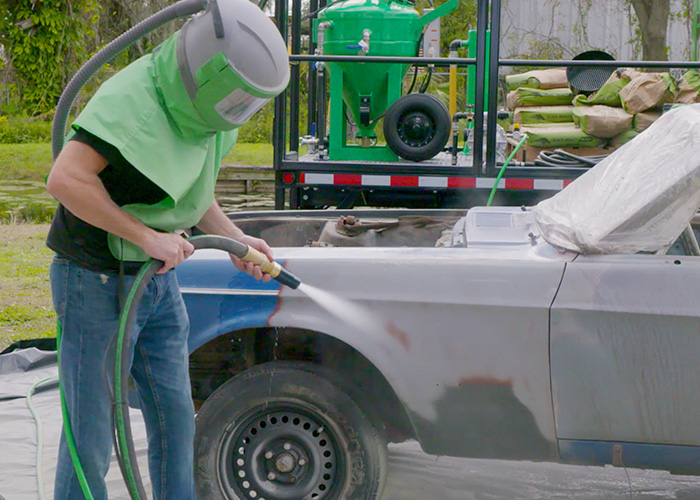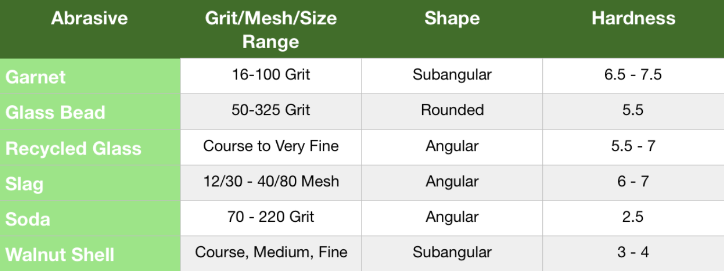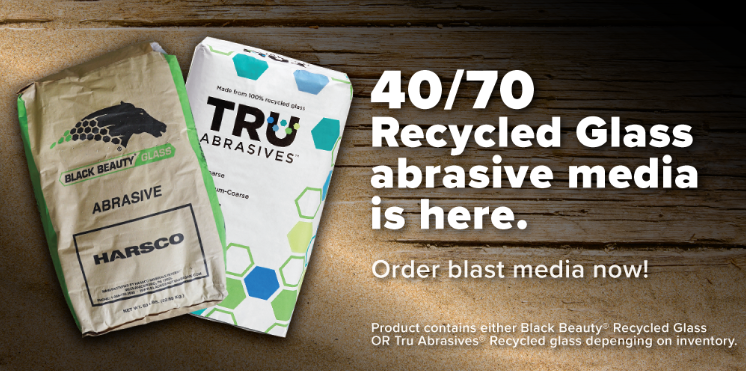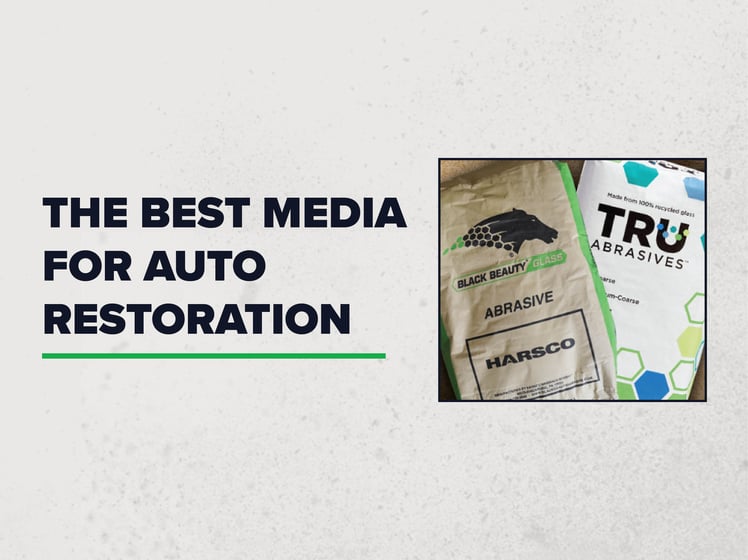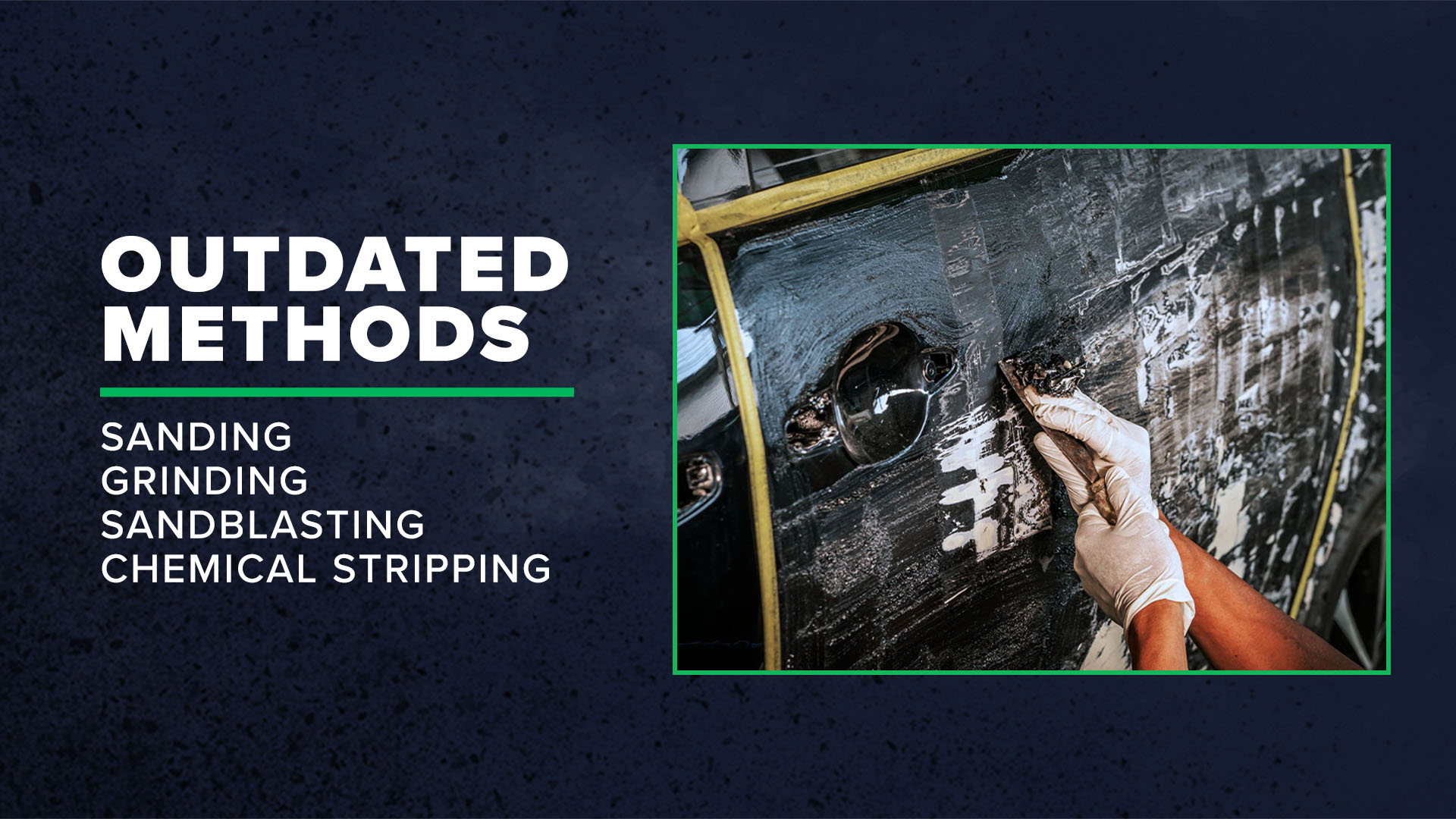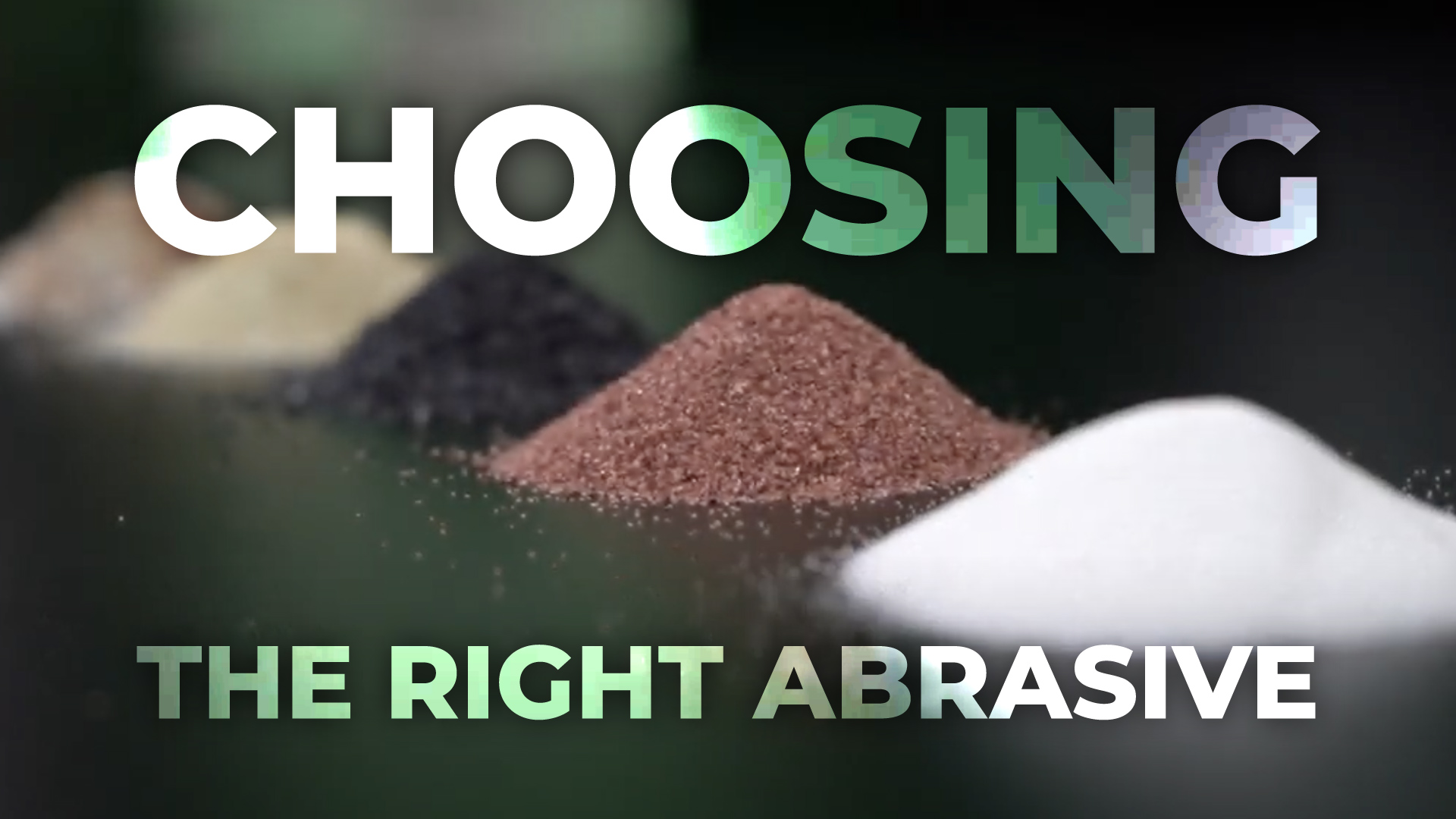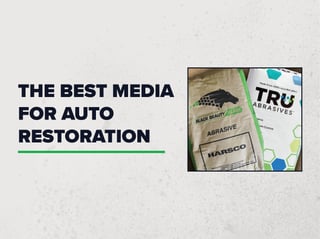
Achieving your desired surface preparation result depends heavily on understanding the various abrasive blasting media options available to you when Dustless Blasting! Whether you choose to wet or dry blast, you'll want to choose the best abrasive for your automotive restoration needs in order to boost productivity and efficiency.
BLASTING MEDIA CHARACTERISTICS
Utilizing different abrasives for your car restoration projects means you'll need to be aware of the different characteristics that influence how they will actually blast the substance or coating. Here is a quick reminder of the differences between the range of the most popular blast media out there.
Size - Impacts the coverage and cleaning speed
Shape - Influences how far you go with surface treatment
Hardness - The harder the abrasive, the more aggressive against the surface
OUR PICK For Car Restoration
Our top pick for abrasive is always going to be recycled bottle glass. We offer 40/70 crushed glass in our Online Store, so be sure to check that out! Not only is it great for a wide variety of auto restoration based projects, but its eco-friendly, clean, and extreme cost-effective nature make it great for so many other types of tasks and jobs! The glass-like smoothness and sharpness set this apart from fellow media. Remove car paint all the while you can avoid damaging the whole car. The sharp edge is a much better tool to cut into surfaces as opposed to sand, and less likely to harm because of the smoothness. This leaves an anchor profile on the car so that paint will adhere to the surface. This media leaves the car primer ready after blasting!
Other Common ABRASIVE BLASTING MEDIA TYPES Vs. Car Restoration
STEEL SHOT
Steel shot is an abrasive media that consists of small steel balls (typically 1/16 square inch or smaller). It is commonly used for grinding and polishing metal surfaces and different types of paint removal. That said, grinding against all the paint on a car is something you'll want to stay away from.
POWER SAND
Power sand is an abrasive media that is very similar to steel shot; however, it has a softer composition which makes it safer to use on certain materials. Commonly used for stripping car paint, grout removal, and tile preparation. Again though, 40/70 crushed glass is a better option for those same types of projects, particularly anything to do with vehicles.
ACRYLIC MEDIA
Acrylic media is a safe alternative to steel grit and power sand. It's non-toxic, chemical resistant, and reusable. Acrylic media works well for most applications including light etching primer, surface finishing on plaster, concrete surfacing, and cleaning of weld joints among others.
GLASS BEADS
Glass beads are also used as an abrasive media, and will last longer than sandblasting media due to the reduced wear on the media itself. However, they are heavy, causing the machine to have slightly less mobility.
More on Media and Auto Restoration
Using a blast media, such as recycled glass, paired with an abrasive blasting system is the key method to getting better at removing paint from any car, including a vintage car or any classic cars. There are some outdated methods that we will make you aware of that you should stay away from, you don't want to do anything to endanger yourself, anyone working with you, or the multiple paint layers on a car.
When you are media blasting with crushed glass, or your chosen abrasive, you'll want to make sure you are doing so with pressurized air or water to actually make sure the media is reaching the intended surface. This is the process we recommend to easily strip paint and prepare the surface for a fresh coat of paint to go on. Our line of Dustless Blasting machines are perfect on executing this kind of project. They'll even let you switch between dry and wet blasting. Check out our line of machines to make sure that you're ready and versatile enough to safely restore cars.
Outdated Methods For Automotive Restoration
Time-honored approaches to classic car restoration can now be thought of as antiquated and potentially hazardous for both the worker and vehicle. While there are many strategies out there for restoring classic cars, some of them can be damaging and lead to further deterioration in your vehicle. Here is what we recommend staying away from:
Sandblasting
There is a pro and con here. Sand or dry blasting is okay when it comes to interior spaces on a car, as long as you are in a well ventilated area of course. But the huge tradeoff here is that is not a good idea for the body panels themselves. This is an easy way to permanently damage the surface you are working on and warp the doors and metal in the process. The surface you leave behind after sandblasting will be very difficult to come back from. And of course keep in mind, if you are blasting with actual sand, this is extremely hazardous to you and those around you when blasting due to sand causing silicious and other health concerns.
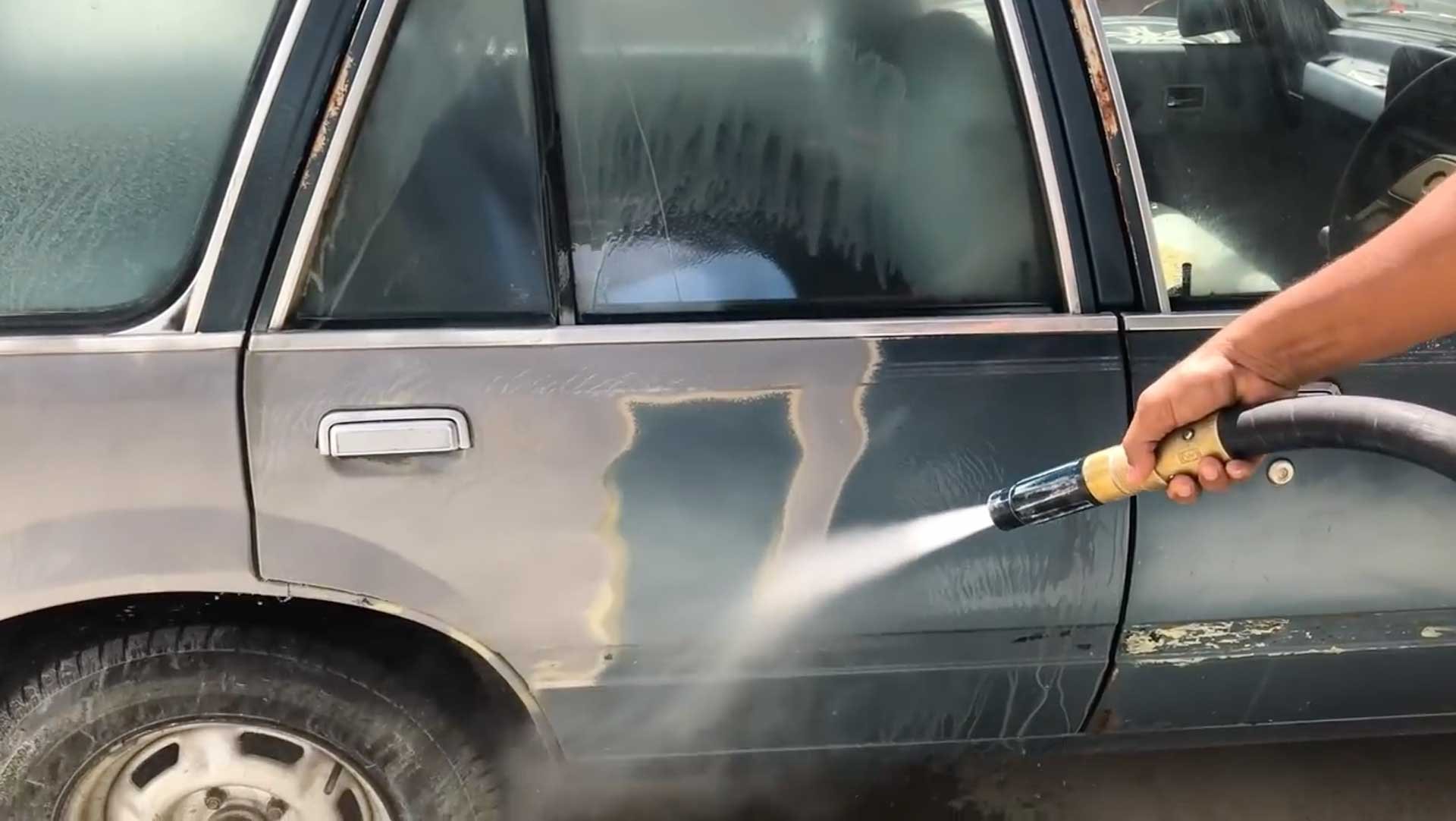
Using Chemicals
While sandblasting can at least be used for interior spaces on your car, chemical dipping is something on the other hand that we do not recommend in any setting. This was once considered an option when in the world of car restoration, it is now considered time consuming and very dangerous. Methylene Chloride have harmful side effects for you and your workers, because of that the EPA have banned it. Chemical stripping then becomes much more time consuming with that removed. At that point, abrasive blasting is a much quicker way to remove the paint layer and surface than chemical stripping. On top of that, stripping with chemicals is a fast way to damage fiberglass and gel coatings on cars.
In addition to the clear danger, chemical strippers likely won't leave that anchor profile you will want while doing automotive restoration. You'll be spending all this time scraping and cleaning to remove the old paint and leftover chemicals, only to have to do additional sanding on the surface to be able to apply new paint over it.
In Conclusion
Combining an abrasive blasting system with a safe and efficient blast media, such as recycled glass, is the best method for automotive restoration jobs. If you're curious about more options, recommended tips and tricks, and learning from other Dustless Blasting professionals, be sure to get involved in our contractor group!
Choosing the right abrasive is one of the most important steps for any blasting job. Different abrasives work best on specific surfaces, so you need to find an abrasive that match both your production needs and one that works best for you on your chosen automotive restoration projects. Dustless Blasting machines allow you to use a wide variety of abrasives, whether you're blasting wet or dry. 40/70 crushed glass is the preferred choice for car restoration because it can easily remove paint and rust without damaging the car’s underlying metal. Learn more about choosing the right abrasive and automotive restoration in general here.
